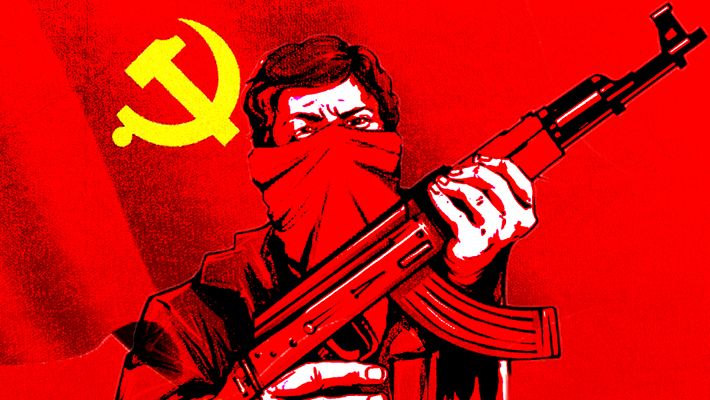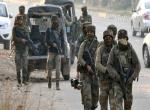It is now well recognised that the Maoist movement in India is deeply rooted in socio-economic conditions in parts of India with large tribal populations. However, misunderstanding and misperceptions about this problem persists due to lack of economic information. A deeper research on the economic dimension of the Maoist conflict can generate perspectives beneficial to policy makers and better explain the conflict in the framework of cost and constraints. The cost-benefit analysis in turn can help policy interventions and convince people of the ineffectiveness of such violent extremist movements.
The Maoist conflict has extensively affected forest produce market and mining in Chhattisgarh and Jharkhand, and agriculture in parts of Andhra Pradesh and Odisha. Economic, social, developmental and strategic costs of Maoist conflict is too substantial to be ignored. There are direct indirect costs, and losses to both the public and private sectors. While a comprehensive research with the use of econometrics is necessary to assess the volume of losses caused by Maoist violence, this essay tries to capture the many dimensions of its economic impact.
A Legacy of Economic Depredations
Ever since the movement first emerged in the Naxalbari area of West Bengal in 1967 following a split in the Communist Party of India (Marxist), the Maoists have pursued their radical and revolutionary goals by violent, disruptive and destructive means. Naxalism, as Maoism in India is often called, rides on the slogans of economic exploitation and underdevelopment1. However, the Indian Maoist literature does not lay out any well-articulated economic programme; it speaks more about ideological and organisational issues, against capitalism, imperialism, globalisation, Special Economic Zones (SEZ) and industrialisation. They vaguely mentioned about people’s democratic economy in the following words: “All the industries, banks and other industries of the Imperialist and the comprador big bourgeoisie will be expropriated, turned over to the new democratic state, all lands will be expropriated and distributed to the landless. State will exercise control over the life of the country’s economy. People’s democratic state will play the principal role in industry and commerce and will control the economic life lines of the Country”2. They have asked the people to stop paying taxes, cess and levy to Government. They have also formulated an all India perspective plan to infiltrate into different industries.
The economics of Naxalism is an economics of extortion, loot, levy and destruction. The movement, like any other, needs funds to sustain itself. It needs large financial flows to continue the armed hostilities against the state. It spends large sums on arms and ammunitions, on funding mass organisations and on propaganda. The Maoists run protection rackets for Ganja/cannabis cultivation. They extort money from contractors engaged in road building and irrigation projects, from businessmen and mine owners, and loot banks and local moneyed people in districts where they are active. They collect money from various government schemes such as the Sarv Shiksha Abhiyan, Mahatma Gandhi National Rural Employment Guarantee Act (MGNREGA) 2005, and the public distribution system, and levy from villagers, traders, small merchants and transporters. In some forested areas under their control, where they have distributed land (pattas) title/ownership to the villagers, a tax is collected in return. They also collect membership fee from villagers and supporters. During elections, they gather funds from a few local politicians. It is estimated that every year the Naxals collect several hundred million rupees as levy and extortion. Naxals collect levy of 7% to 10% of cost from road work, 2% to 3% from construction of schools and colleges, about Rs 5 million from each factory and mine in areas they dominate. They collect huge protection money from industries, such as the paper industry in Andhra Pradesh, Odisha and Maharastra. In order to force the industries to pay, they use threats and often burn vehicles and equipment.
Table 1
| Number of hits by Maoists | (From Jan 2006-June 2009)3 |
|---|---|
| Railways | 122 |
| Mines, Steel Plants | 59 |
| Transmission lines | 42 |
| Telecom | 83 |
| Total | 316 |
Between January 2006 to June 2009 the Naxals had hit the Railways, transmission lines, steel plants and mines total 316 times.
Human and Infrastructure Costs
The human and material costs of the Maoist conflict have been high. Currently, it is almost impossible to estimate the exact figure of the value of destruction caused by them and the intangible losses. That the conflict has taken a heavy toll on human lives is clear from the limited data available. The fatalities due to the conflict during last thirteen and half year is 7857 human lives, according to the South Asia portal. It includes 3110 civilians, 1986 members of security forces and 2781 Maoist activists. The number of injured may be at least three times the fatalities. The full extent of the human miseries caused cannot be appreciated unless one visits these areas.
The Maoists have systematically destroyed infrastructure and other public property, damaging the local economies. Their armed attacks have caused loss of human resources, affected trade and business, tourism, mining activities, and led to escalating cost of various projects in the affected areas. They sustain a picture of underdevelopment by destruction of infrastructure in regions that already suffer from a developmental lag. The cost of damage to the infrastructure due to the destruction perpetrated by the Maoists is a substantial one. Infrastructural development has suffered the greatest setback in areas where they are active. They have destroyed hundreds of mobile towers, high tension towers, roads, bridges, culverts schools, hostels and guest houses in the affected areas. Hundreds of mobile towers of BSNL, Airtel, Reliance and other companies were blown off in Daltonganj, Aurangabad, Gaya, Palamu, Dantewada, Sukma, Bijapur, Garhchiroli and Raigada districts of Bihar, Jharkhand, Chhattisgarh and Odisha during the last ten years. Naxals on many occasions have destroyed high tension electric transmission towers, poles and 11 kv and 33 kv electric lines in Andhra, Bihar, Jharkhand, Odisha and Chhattisgarh. Besides monetary loss, the disruption of electric transmission has caused black outs and inconvenienced millions of people for a few weeks 4. The intangible cost of disruption of electricity to public utilities, hospitals, students, critical patients, and to society as a whole cannot be computed. The entire loss due to damage of roads, bridges, mobile towers, electric transmission, according to a rough estimate, is about rupees 20 billion per annum.
Maoist have also looted dozens of banks and ATMs. For example, on 22nd May 2008 Maoist activists looted a cash delivery van of the ICICI Bank on the National Highway under Tamar police station of district Khunti, around 50 km away from Ranchi. They took away Rs 51.1 million and 1.30 kg of gold5. They have torched several bank branches in Bastar and Jharkhand. Currency remittances to banks in Naxal dominated areas have become very cumbersome and costly. In few places the Reserve Bank of India had to hire helicopters to remit currency. Dozens of branches were at different times closed in remote areas as a result of Maoist activities. This has hit the business and livelihood of local people and the local economy.
The education system in the area has similarly been disrupted. Maoists have damaged dozens of school buildings and hundreds of hostels. In many areas they blasted the buildings by using mines or explosives. In some areas they abducted school children to use them for party work. The educational system in remote forested areas has been disrupted either due to schools and hostels being destroyed or the taking away of some students by the Maoists. The fear psychosis created by blasted school and hostel buildings, and the kidnapping of students has also led to an increase in drop outs from the schools. The reason they gave for attacking the schools was to force out the security forces that at times take shelter in the school buildings. However, through the 1990s and 2000-2001 also Naxals attacked school buildings and hostels, when there were no central forces present in Odisha, Chhattisgah and Jharkhand.
Roads and infrastructure in general have had a huge setback. This has in turn hampered economic activity. Moreover, road construction and repair is difficult in forested and hilly terrains and a costly affair. The agencies are finding it difficult to construct roadsM6. The construction of about 500 km of Nation Highways and six bridges in Naxal areas of Chhattisgarh, Andhra, Odisha could not take off. In Bijapur district of Chhattisgarh, to construct a 22 km stretch of road from Bijapur to Ganglur, the Police department had to sacrifice of 56 lives of security men in various offensives by Naxals. Road transportation similarly has been seriously affected in Naxal areas. The Maoists mine and regularly damage roads. They have damaged some National Highways as well. Every year during shut downs declared by the Maoist outfit, transportation activities in few state highways and National Highways come to a standstill. The list of vulnerable National Highways can be seen in Table 2.
Table 2: National Highways hit by Maoist Violence
| NH 20 | Biharsharif- Hazaribagh- Ranchi-Khunti |
|---|---|
| NH 22 | Patna- Punpun-Gaya |
| NH 26 | Keshkal- Koraput-Salur-Vijay Nagram |
| NH 326 | Rayagada- Koraput-Malkangiri-Moto |
| NH 27 | Naxalbari |
| NH 221 | Jagdapur-Konta-Bhadrachalam |
| NH 353C | Gadchiroli-Sironcha |
| NH 57 | Phulbani-Kalinga Ghati |
| NH 202 | Bhopal Patnam-Venkatpuram |
| NH 163 | Geedam-Dantewada |
| NH 765 | Shri Sailam |
Naxals have continuously targeted the Railways, including both goods and passenger trains. They caused the derailment of Gyaneshwari Express on 28th May 2010 at Midnapore in West Bengal and set fire to Vishakha Express. They have also hijacked a train for a few hours. During every call of closure of rail movements by Naxalites, they damage the railway line and cause accidents in Chhattisgarh, Bihar and Jharkhand. In the last five years they have damaged railway tracks in the districts of Gaya, Bokaro, Dhanbad, Jamshedpur, Ranchi, Giridih and Dantewada. They have also damaged many railway stations such as Chiyanki, Dumri and Jageshwar of Bihar, and as recently as in March 2017 they ransacked the Doikallu railway station in Odisha to protest against Prime Minister Narendra Modi’s visit to the State. The Hazaribagh-Ranchi railway project suffered losses because of Naxal activities in 2008. The loss suffered by due to Naxals in 2016-17 was approximately Rs. 400 million; the cost of repairing damaged Railway lines exceeds few billion rupees every year. They also disrupted rail transport in some areas of West Bengal and Bihar for a considerable time at night in the past leading to the loss of several billion rupees to the railway department every year.
The conflict in the area has given rise to an environment of fear among potential tourists, massively affecting the tourism industry. The area in which the Maoists are active in Central India has been blessed with scenic spots such as Chitrakote and Tirathgarh water fall, Indrawati tiger reserve, Kanger valley, Koundiniya, Papikonda and Udayanti national park, Shrisailam, Simlipal, Kawal, Palamu tiger reserves, but because of the looming fear of violence, they do not attract many tourists.
Attacks on Industry and Mining
Captured top Naxal leaders during interrogations had revealed that they had identified several SEZs for attracting foreign direct investments, and chalked out plans to disturb ongoing projects. Naxals have targeted Latehar aluminium factory, Tata steel plant Jamsedpur, Ghatshila satellite towns, Chandil steel plant and Dumca power plant, among the many other industrial units targeted. Naxals have also tried to infiltrate and influence trade unions in order to sabotage industrial units. A senior Maoist central committee member said they would target Multinational firms whose investments have displaced tribal settlements7.
Naxal areas also find it hard to set up new industrial projects. Lalgarh, Singur, Nandigram, Kalinga Nagar and Lohandiguda are a few examples of major projects that failed to take off. Several billion of rupees had been invested to procure land and on initial construction of these incomplete projects. Global brokerage firm CLSA in its report of 2009 mentioned: “The Maoist threat could derail the plans to develop the mineral wealth of the country. In Kalinga Nagar of Odisha and Lohandi Guda in Chhattisgarh, Tata Steel was unable to complete its projects. Maoist shut downs in Jharkhand state with rich deposits of iron ore and dolomite have cost local steel makers 60 days of lost work per year. Texas Powergen, Posco, Vedanta, Mittal are also being deterred from investing about $ 85 billion in this mineral rich belt. Private sector investment vital to overall developments of any region maynot take place if the Government cannot find a sustainable solution to Maoist problem”8.
Naxal activities caused permanent closure of some mines such as Charagaon, Pallemadi and Godavari iron ore mines and also temporary closure of some mines in Bailadilla. National Mineral Development Corporation’s (NMDC) project at Bailadila suffered a minimum loss of Rs. 20 million per day when Naxals called for closure of transportation of minerals. The destructions of conveyor belts of NMDC, underground lines of Essar and other units cause huge losses to the mining sector.
Loss to forest and forest produce
Availability of natural resources has important consequences for conflict dynamics. Naxals distribute land ‘pattas’ to villagers by clearing forest lands. Hundreds of square km of forest land have been destroyed by them. They also destroy considerable stretches of forests in order to set up their temporary camps. Economic loss due to this deforestation runs into many billions of rupees. Naxals in the past have destroyed forest and bamboo depots, forest guest houses and forest range offices in Andhra Pradesh, Bihar, Chhattisgarh, Jharkhand, Maharashtra, Madhya Pradesh, Odisha and Telengana. Tendu leaves collection in many areas was also hit by the conflict.
Thousands of people have been displaced due to the violence in Chhattisgarh, Jharkhand and in other states. The cost due to displacement runs to a few billion rupees. Violence, loss of livelihood and poor economic conditions escalate the cost of rehabilitation as well. It creates a vicious poverty-conflict trap.
Additional Economic Costs
The Government needs fund for counter-measures. The cost of maintaining security forces in the field is large. Deployment cost of Central Police Forces and State Police Forces becomes a burden on the national economy. About 110 battalions of Central police forces are deployed in Naxal affected states. The state governments of affected States have also developed and deployed similar numbers of police forces to counter Naxal offensives. Besides, fortified police stations and police posts in affected areas have cost about Rs. 10 billion .
In conflict zones, value of life reduces and the cost of everything else increases. Construction costs of many projects, including road and bridge construction, multiplies in Naxal hit areas. In few areas food and construction materials are sent along with security convoys. Conflict also doubles the time required for completing any project. In many places Naxals are known to destroy the equipment and vehicles used for construction work. It is worthwhile to put the words of the then Malkangiri District Collector about escalation of costs: ‘‘We refloated the tender 11 times for construction of Moto Bridge on river Sabri but still there is no response. In 1999 the cost of the bridge was 7 crores, in 2009 it escalated to 27 crores, even then none of the contractors came forward”9.
Conclusion
The broader evaluation of cost of losses caused by Maoist depredations to railway, roads, electricity, government buildings, forest, educations, vehicles, mining, industries, agricultures, commerce and trade is conservatively estimated at about Rs. 200 billion per annum. Lack of development punishes the local population and disruptions escalate the cost of projects, affecting the national economy.
The business community and foreign investors have expressed low confidence in investing in the conflict zones. The shadow of conflict eclipses economic activities and shatters local economy. Conflict related damages to domestic trade, industry, tourism and agriculture pushes Maoist threatened areas into chronic economic decline. Substantial business opportunities have been lost. Infrastructure and environment has suffered tremendous losses. Essential services like health and education have suffered setbacks. The long term economic consequences of the Naxal problem are most worrisome and are worth deeper studies by conflict analysts. Coupled with the loss of lives, the detrimental long term effects on the economy makes it even more important to work collectively towards an early resolution of the conflict.
(One of the foremost experts on Naxal Movement, Shri Giridhari Naik is a former Director General of Police, Chattisgarh, and perhaps the most on-the-ground experienced officer in fighting it.)
References:
- After the merger of the People’s War Group (PWG) and the Maoist Coordination Centre (MCC) the various factions of the movement was brought together and renamed as Communist Party of India (Maoist).
- Please see pages 34, 67, 136 and 137 of the Strategy and Tactics of the Indian Revolution, the Central Committee, Communist Party of India (Maoist).
- Times Nation, August 2009.
- Times of India, 14 October 2009, Indian Express, 10 June 2008.
- Pioneer, 22 May 2008.
- Indian Express, 10 June 2008.
- The Hindu, 17 December 2009.
- Hindustan Times, 15 December 2005.
- Times of India, 22 July 2008.
(The paper is the author’s individual scholastic articulation. The author certifies that the article/paper is original in content, unpublished and it has not been submitted for publication/web upload elsewhere, and that the facts and figures quoted are duly referenced, as needed, and are believed to be correct). (The paper does not necessarily represent the organisational stance... More >>
Image Source: https://static.asianetnews.com/images/01crz9cpk83gjghyvzkjfhwk5m/naxalism--2-_710x400xt.jpg










Post new comment